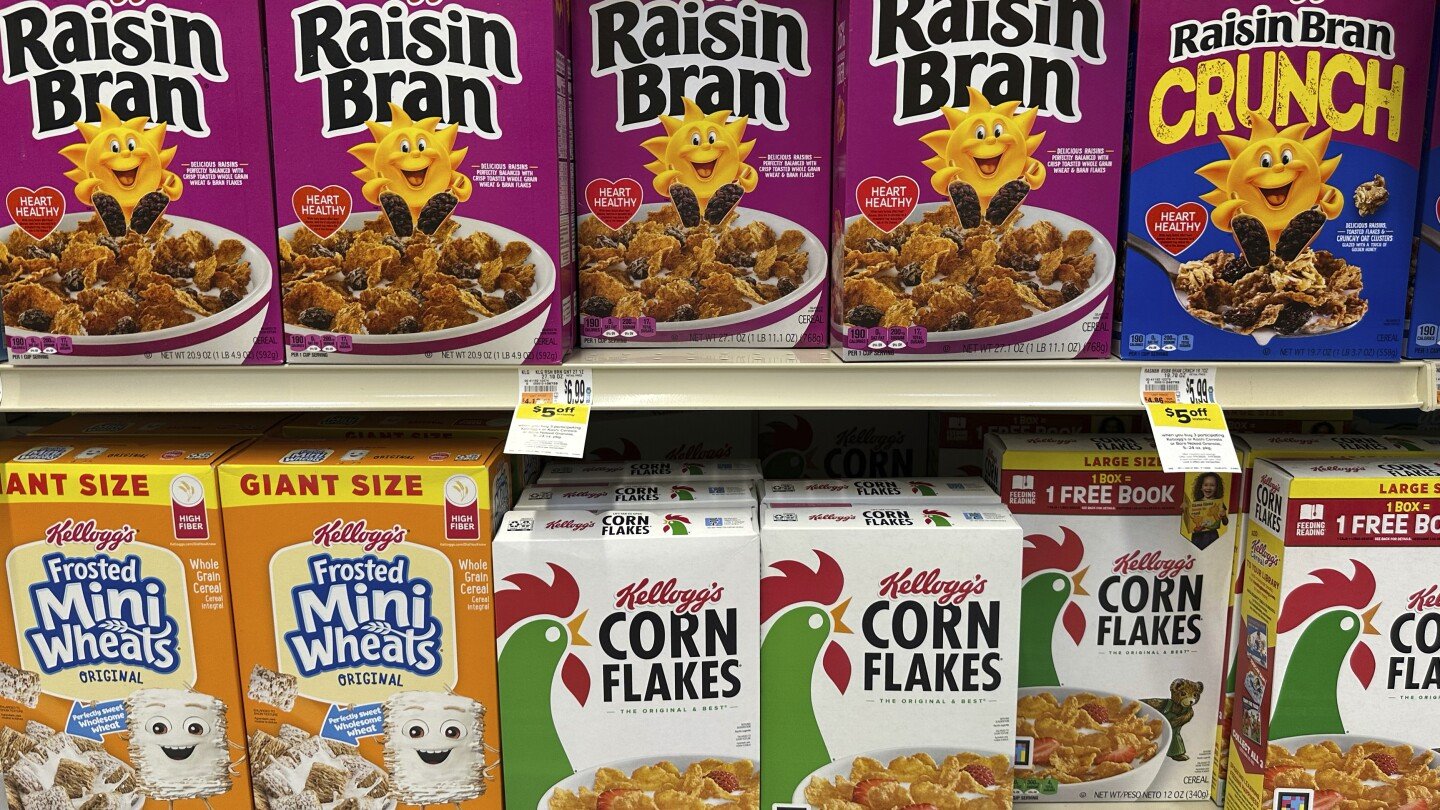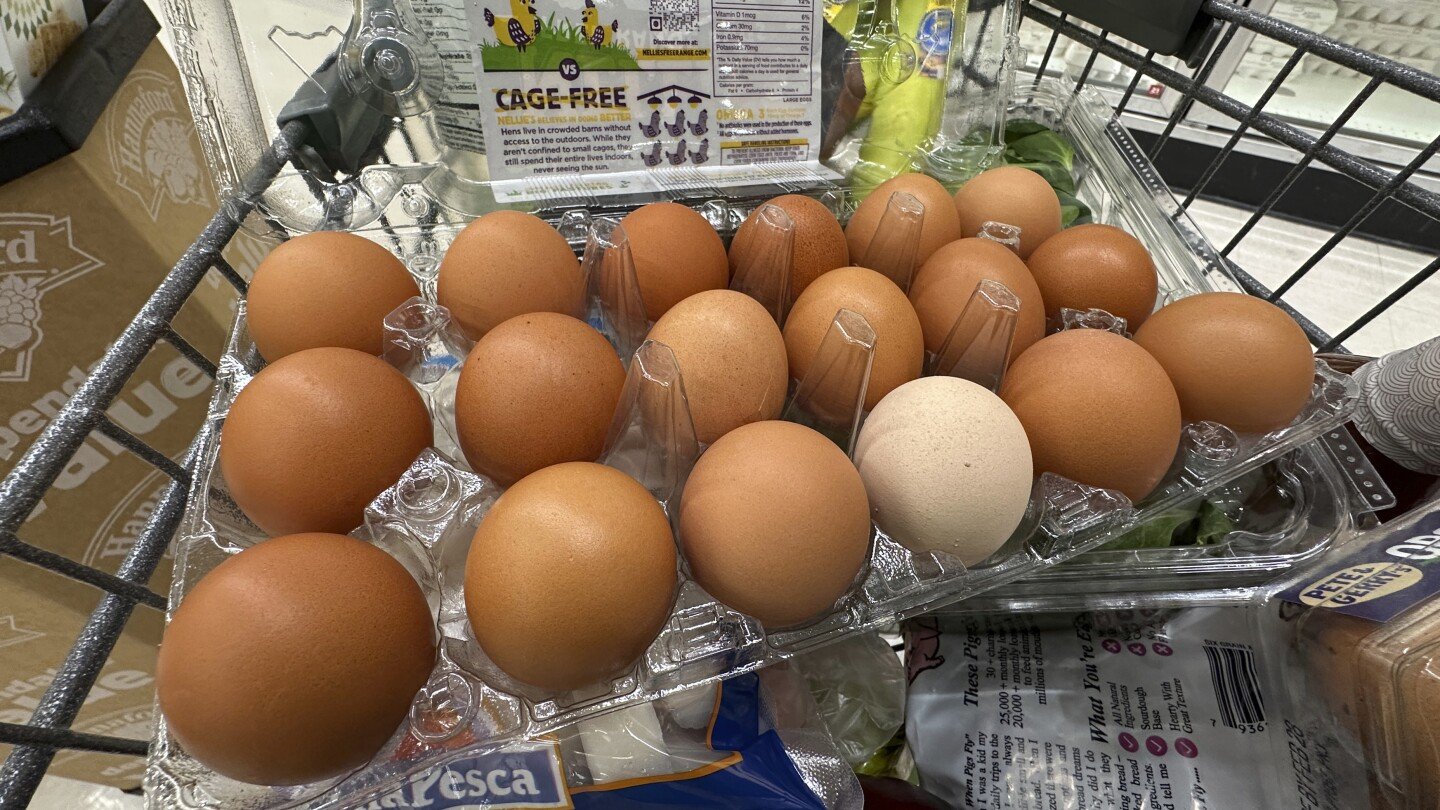Lifestyle
King Charles III’s brief hospital stay reminds UK that monarch is still a cancer patient

LONDON (AP) — King Charles III waved to well-wishers in central London on Friday as he headed for his country estate in western England a day after he was briefly hospitalized because of side effects from a scheduled cancer treatment.
Charles canceled planned engagements on Thursday afternoon and Friday on the advice of his doctors, Buckingham Palace said, without providing details about the “temporary side effects” that he experienced.
But the episode was a reminder that the king is 76 and continues to undergo treatment for an undisclosed form of cancer diagnosed more than a year ago.
That reality has slipped away from the collective consciousness since last spring, when Charles returned to public duties after stepping away for almost three months to focus on his initial treatment and recovery. In the intervening months, he has attended D-Day commemoration events in France, presided over the State Opening of Parliament and even embarked on a nine-day visit to Australia and Samoa.
AP AUDIO: King Charles III’s brief hospital stay reminds UK that monarch is still a cancer patient
AP correspondent Charles de Ledesma reports King Charles III has been seen in public for first time since his brief hospitalization for the side effects from his cancer treatment.
But during the early stages of his treatment, Charles continued fulfilling his constitutional duties as head of state, including reviewing government papers and meeting with the prime minister.
Here’s a brief rundown of what we know about the king’s health.
What happened?
The king went to the London Clinic on Thursday morning for a scheduled cancer treatment. The clinic is a private hospital in central London, where Charles has been receiving treatment since his diagnosis in February 2024.
“Following scheduled and ongoing medical treatment for cancer this morning, the king experienced temporary side effects that required a short period of observation in hospital,” Buckingham Palace said in a statement. “His majesty’s afternoon engagements were therefore postponed.”
The king then returned to his home at Clarence House, where he reviewed papers and made calls, the palace said. Queen Camilla didn’t join him at the hospital.
“His majesty would like to send his apologies to all those who may be inconvenienced or disappointed as a result,” the palace said in a statement.
Will this affect future events?
The king is expected to press ahead with his work in the coming days, including a state visit to Italy scheduled for early April.
Why did the palace decide to reveal this information?
Palace officials have recognized that it’s better to release some information about the king’s health, rather than allow media speculation to fill the void when he’s forced to cancel scheduled events.
But they have tried to walk a fine line, seeking to balance the public’s legitimate interest in the health of the head of state with Charles’ right to privacy.
This was seen first in January 2024, when the palace announced Charles was being treated for an enlarged prostate, followed by the cancer diagnosis a few weeks later.
The decision to talk about the king’s health issues marked a departure from past palace protocols. For example, when Queen Elizabeth II began missing events toward the end of her life, royal officials repeatedly said that she was suffering from “mobility issues,” without providing further details. Her death certificate listed the cause as “old age.”
The public was unaware that Charles’ grandfather, King George VI, had lung cancer before his death in February 1952 at the age of 56. Some historians suggest that even the king wasn’t told about the gravity of his condition.
Charles’ decision to break with the past has paid dividends
Health authorities have applauded the king’s openness, saying his disclosures saved lives by encouraging thousands of men to have prostate exams.
Royal experts say Charles’ candor has also brought him closer to the public by demonstrating that he faces the same kinds of challenges that they do. Health is, after all, the great leveler.
Why is Charles doing so much?
Charles’ busy schedule is a reminder that this is a man who waited around seven decades to become monarch and he wants to make the most of it.
The king has been open about his desire to demonstrate that the monarchy still has a role to play as a symbol of unity and tradition in the sometimes fractious, multicultural nation that is 21st-century Britain.
And the job of a modern king is to take part in a whirl of public events, from the pageantry of state occasions when he wears the crown and rides through the streets of London in a horse-drawn carriage to more mundane appearances such as opening public buildings or handing out awards for public service.
Charles took part in 372 public engagements last year, even after stepping aside for almost three months because of cancer treatment, according to data compiled by The Times of London newspaper. That made him the second-busiest royal behind his sister, Princes Anne, who had 474 engagements.
Charles has long been known as a workaholic, and Queen Camilla said last year that he “won’t slow down and won’t do what he’s told.” During her Reading Room literary festival in July, the queen told author Lee Child that her husband was “doing fine,” but hadn’t heeded her advice to curtail his schedule.
Prince Harry once said that his father worked so hard that he would fall asleep at his desk and wake up with bits of paper stuck to his face.
What are royal experts saying?
The king’s busy schedule has obscured the fact that he is an older man with cancer, said Robert Hardman, author of “Charles III: New King, New Court, the Inside Story.”
“We’ve seen him go back to normal,” Hardman told the BBC on Friday.
“I think this is sort of a reminder that this is a head of state undergoing treatment for cancer, because I think a lot of us tended to forget it.”
Lifestyle
Americans buying less cereal may be a factor in sale of Kellogg’s brands

Breakfast cereal could use a lucky charm.
U.S. sales of the colorfully packaged morning staple have been in a decades-long decline, a trend back in the spotlight with news that Italian confectioner Ferrero Group plans to purchase WK Kellogg, maker of Corn Flakes, Froot Loops, Rice Krispies and other familiar brands.
Except for a brief period during the coronavirus pandemic, when many workers were home and had time to sit down with a bowl of cereal and milk, sales of cold cereal have steadily fallen for at least 25 years, experts say.
In the 52 weeks ending July 3, 2021, Americans bought nearly 2.5 billion boxes of cereal, according to market research company Nielsen IQ. In the same period this year, the number was down more than 13% to 2.1 billion.
Cereal has been struggling for multiple reasons. The rise of more portable options like Nutri-Grain bars and Clif Bars – which both went on sale in the early 1990s – made it easier for consumers to grab breakfast on the go.
Concerns about food processing and sugar intake have also dimmed some consumers’ enthusiasm for cereals. One cup of Lucky Charms contains 24% of a consumer’s daily recommended intake of sugar, for example.
“Cereal finds it really hard to get out from underneath that,” said Tom Rees, global insight manager for staple foods at the consulting company Euromonitor. “It can’t escape the fact that it doesn’t look like a natural food. You have to create it and form it.”
Rees noted that for decades, cereal manufacturers focused on adding vitamins and minerals to build cereal’s health credentials. But consumers now are looking for simplified ingredient lists.
Artificial dyes — like the petroleum-based colors that brighten Froot Loops — have also come under fire. Last fall, dozens of people rallied outside WK Kellogg’s Battle Creek, Michigan, headquarters demanding that it remove artificial dyes from its cereals. Kellogg and General Mills — another major U.S. cereal maker — have since pledged to phase out artificial dyes.
Add to that, consumers are expanding their idea of what breakfast can be. Yogurt and shakes have replaced the traditional bacon and eggs. Kenton Barello, a vice president at the market research firm YouGov, said his polling shows that Generation Z consumers, who were born between 1997 and 2007, eat more vegetables for breakfast than other generations.
Barello said YouGov’s polling also shows that members of Gen Z are less likely to eat breakfast but still buy ready-to-eat cereal, suggesting they’re eating it as a snack or for other meals.
“With younger generations, there are differences in their relationship with food and these eating moments,” Barello said. “They are going about breakfast in a different way than Millennials, Gen X and Baby Boomers.”
Cereal’s struggles are part of what led to the breakup of the Kellogg Company. In 2023, the century-old company that put Battle Creek, Michigan, on the map split into two companies. Kellanova took popular snack brands like Cheez-Its, Pringles and Pop-Tarts as well as international cereals, and WK Kellogg made cereals for the U.S., Canada and the Caribbean.
In 2024, M&M’s maker Mars Inc. announced a plan to buy Kellanova for more than $30 billion. That plan has cleared U.S. regulators but is still awaiting regulatory approval in Europe. WK Kellogg was left to try to rejuvenate the cereal business.
The sale of WK Kellogg to Ferrero doesn’t mean supermarket cereal aisles are at risk of extinction. Packaged food companies have options for turning around their soggy cereal sales, Rees said. He thinks Kellogg’s Mashups line, which mixed brands like Frosted Flakes and Froot Loops into one box, appeal to younger consumers, who tend to like interesting flavor combinations.
The market may also have a fragmented future, according to Rees. Companies may have to accept that younger buyers want a sweet-and-spicy cereal while older buyers might want a Keto-friendly option.
“The future might be realizing that the era of ‘This brand will serve everybody’ isn’t going to happen,” Rees said.
Julia Mills, a food analyst with the consulting company Mintel, thinks the shrinking population of children in the U.S. gives cereal makers the opportunity to shift to more sophisticated flavors and packaging. Cereal could be positioned as a fancy topping for yogurt, for example, or a fiber-rich food that can improve gut health.
Some niche cereal brands, like high-fiber Poop Like a Champion cereal and high-protein, zero-sugar Magic Spoon, are already doing that. But legacy brands say they shouldn’t be counted out.
Jeffrey Harmening, the chairman and chief executive officer of Cheerios maker General Mills, said his company considered trying to acquire Magic Spoon. Instead, it made high-protein versions of Cheerios, which now outsells Magic Spoon.
“The key to longer term is, honestly, is giving consumers more of what they want,” Harmening said during a conference call with investors in March.
Lifestyle
Trump administration sues California over egg prices and blames animal welfare laws

The Trump administration is suing the state of California to block animal welfare laws that it says unconstitutionally helped send egg prices soaring. But a group that spearheaded the requirements pushed back, blaming bird flu for the hit to consumers’ pocketbooks.
The lawsuit, filed in federal court in California on Wednesday, challenges voter initiatives that passed in 2018 and 2008. They require that all eggs sold in California come from cage-free hens.
The Trump administration says the law imposes burdensome red tape on the production of eggs and egg products across the country because of the state’s outsize role in the national economy.
“It is one thing if California passes laws that affects its own State, it is another when those laws affect other States in violation of the U.S. Constitution,” U.S. Agriculture Brooke Rollins said in a statement Thursday. “Thankfully, President Trump is standing up against this overreach.”
Egg prices soared last year and earlier this year due in large part to bird flu, which has forced producers to destroy nearly 175 million birds since early 2022. But prices have come down sharply recently. While the Trump administration claims credit for that, seasonal factors are also important. Avian influenza, which is spread by wild birds, tends to spike during the spring and fall migrations and drop in summer.
“Pointing fingers won’t change the fact that it is the President’s economic policies that have been destructive,” the California Department of Justice said in a statement Friday. “We’ll see him in court.”
The average national price for a dozen Grade A eggs declined to $5.12 in April and $4.55 in May after reaching a record $6.23 in March, according to the U.S. Bureau of Labor Statistics. But the May price was still 68.5% higher than a year earlier.
“Trump’s back to his favorite hobby: blaming California for literally everything,” Gov. Gavin Newsom’s office said in a social media post.
The federal complaint alleges that California contributed to the rise in egg prices with regulations that forced farmers across the country to adopt more expensive production practices. The lawsuit also asserts that it is the federal government’s legal prerogative to regulate egg production. So it seeks to permanently block enforcement of the California regulations that flowed from the two ballot measures.
“Americans across the country have suffered the consequences of liberal policies causing massive inflation for everyday items like eggs,” Attorney General Pam Bondi said in a statement. “Under President Trump’s leadership, we will use the full extent of federal law to ensure that American families are free from oppressive regulatory burdens and restore American prosperity.”
While 2018’s Proposition 12 also banned the sale of pork and veal in California from animals raised in cages that don’t meet minimum size requirements, the lawsuit only focuses on the state’s egg rules.
Humane World for Animals, which was named the Humane Society of the United States when it spearheaded the passage of Proposition 12, says avian influenza and other factors drove up egg prices, not animal welfare laws. And it says much of the U.S. egg industry went cage-free anyway because of demand from consumers who don’t want eggs from hens confined to tiny spaces.
“California has prohibited the sale of cruelly produced eggs for more than a decade — law that has been upheld by courts at every level, including the Supreme Court. Blaming 2025 egg prices on these established animal welfare standards shows that this case is about pure politics, not constitutional law,” Sara Amundson, president of the Humane World Action Fund, said in a statement.
The American Egg Board, which represents the industry, said Friday that it will monitor the progress of the lawsuit while continuing to comply with California’s laws, and that it appreciates Rollins’ efforts to support farmers in their fight against bird flu and to stabilize the egg supply.
“Egg farmers have been both responsive and responsible in meeting changing demand for cage-free eggs, while supporting all types of egg production, and continuing to provide options in the egg case for consumers,” the board said in a statement.
Lifestyle
One Tech Tip: All the ways to unsubscribe, after ‘click-to-cancel’ was blocked

NEW YORK (AP) — A “click-to-cancel” rule, which would have made it easier for consumers to end unwanted subscriptions, has been blocked by a federal appeals court days before it was set to go into effect. But there are ways to end those subscriptions and memberships, even if they take some work.
The rule would also have required companies to disclose when free trials and promotional offers would end and let customers cancel recurring subscriptions as easily as they started them. But even without the new federal guidance, here are some ways to stay on top of subscription and membership fees.
Use calendar reminders and regularly review your bills
Experts at the Consumer Federation of America recommend setting calendar reminders for whenever a free trial period ends, to alert yourself to cancel promotional offers before the real recurring costs kick in. The auto-enrollment process, in which the company does not remind the consumer via email that a trial is about to end and higher monthly payments will begin, was also at the heart of the FTC’s rule.
“No subscription business model should be structured to profit from a gauntlet-style cancellation process,” said Erin Witte, Director of Consumer Protection for the Consumer Federation of America, in a statement on the click-to-cancel rule.
Regularly reviewing your credit card and debit card bills can also help you keep track of any recurring charges — including price increases you may have missed or that you didn’t anticipate when trying out a new membership or subscription.
Know the terms and conditions of a given subscription
“Companies make it easy for consumers to click to sign up and easy for the companies to automatically withdraw funds from consumers’ accounts,” said Shennan Kavanagh, Director of Litigation at the National Consumer Law Center (NCLC) in a statement on the FTC’s click-to-cancel rule. “People should not (have to) spend months trying to cancel unwanted subscriptions.”
Given the FTC’s vacated rule, though, companies may still legally require that customers cancel memberships or subscriptions by phone, even as they permit signing up, enrolling, and paying bills online. Consumer advocates say this places an extra burden of time and energy on the consumer to stop an unwanted recurring fee, but sometimes knowing the terms of the subscription and getting on the phone is worth the trouble.
There are some services that unenroll you
Apps like Rocket Money and services like Trim, which is accessed through a browser, can keep track of your recurring monthly fees and subscriptions, for free — or for a fee — and can help you catch new ones or even unsubscribe from some services.
For parents, especially, a service like Trim could help inform them that a child has started a new subscription, game or membership before the fees recur. And Rocket Money will actively work to end unwanted subscriptions for you, for a monthly price. If the company can’t successfully end or cancel the subscription or membership, it will give the customer the information needed to do so. Trim also provides this service, in its premium form, for an additional fee.
Resist deals when canceling
The FTC is currently moving forward with preparations for a trial involving Amazon’s Prime program, which accuses the retailer of enrolling consumers in its Prime program without their consent and making it difficult to cancel subscriptions.
Often, when a consumer tries to cancel a subscription for something like Prime, which offers free delivery and streaming video, the company will offer a month or more of the subscription at a promotional rate — half off, or at other, better-seeming values, to entice a customer to stay. Staying strong in the face of what may appear to be a good deal can help you stop recurring monthly fees before you forget to cancel them again.
Agreeing to yet another trial or promotional rate, which is another on-ramp to auto-enrollment, just continues the cycle, according to consumer advocates.
What would the FTC’s rule have done?
The FTC’s rule would have required businesses to obtain a customer’s consent before charging for memberships, auto-renewals and programs linked to free trials. The businesses would have also had to disclose when free trials and promotional offers would end.
The U.S. Court of Appeals for the Eighth Circuit said this week that the FTC made a procedural error by failing to come up with a preliminary regulatory analysis, which is required for rules whose annual impact on the U.S. economy is more than $100 million.
The FTC said that it did not have to come up with a preliminary regulatory analysis because it initially determined that the rule’s impact on the national economy would be less than $100 million. An administrative law judge decided that the economic impact would be more than the $100 million threshold, and the court decided to vacate the rule.
Former President Joe Biden’s administration had included the FTC’s proposal as part of its “Time is Money” initiative, which aimed to crack down on consumer-related hassles.
——
“The Associated Press receives support from Charles Schwab Foundation for educational and explanatory reporting to improve financial literacy. The independent foundation is separate from Charles Schwab and Co. Inc. The AP is solely responsible for its journalism.”
-

 Asia5 days ago
Asia5 days agoIndonesia’s Mount Lewotobi Laki Laki erupts sending ash 11 miles into sky
-

 Africa4 days ago
Africa4 days agoCairo telecom fire injures 14, disrupts internet nationwide
-

 Europe4 days ago
Europe4 days agoHe was born to a US citizen soldier on an army base in Germany. Now he’s been deported to Jamaica, a country he’d never been to
-

 Asia3 days ago
Asia3 days agoA torpedoed US Navy ship escaped the Pacific in reverse, using coconut logs. Its sunken bow has just been found
-

 Africa4 days ago
Africa4 days agoKenya: at least 10 dead in ongoing protests, 29 injured nationwide
-

 Lifestyle3 days ago
Lifestyle3 days agoArmani couture channels black as maestro misses Paris bow for 1st time, days from 91st birthday
-

 Africa3 days ago
Africa3 days agoUN Human Rights Office says ‘deeply troubled’ by Kenya protester deaths
-

 Sports4 days ago
Sports4 days ago‘Keep pumping’: The new dance inspiring Novak Djokovic’s quest for a record-equaling Wimbledon title




